Director looks at 'Moneyball' as inspiration for PMA's future
Mark Bessire, director of the Portland Museum of Art, readily acknowledges it's a fair question to ask why the museum is engaged in a multi-year effort to reimagine itself when its metrics are strong and its collections include paintings by Winslow Homer and others that would be coveted by much larger museums across the country.
Yes, he agrees with a smile, the museum maintains one of highest percentages of members per capita in the country, with 8,200 members generating more than $600,000 in unrestricted funds for the museum in its 2014-15 fiscal year. Corporate membership grew substantially, from 42 to 65 members. More than 60% of its $7.9 million operating budget was raised through contributions and grants. Its “Free Friday” evenings attracted 33,700 visitors, with overall attendance for the year pushing 140,000.
All good. So why rock the boat?
“One of the influences on my thinking on management is a book called 'Moneyball,'” Bessire replies, referring to Michael Lewis's bestseller describing how the Oakland Athletics in 2002 built a winning team on a limited budget after losing several big stars to major market teams that could afford to pay much higher salaries. The book, he says, helped him realize that a small museum, no less than a small-market Major League Baseball team, can't afford to rest on its laurels, not even for a season, without risking a loss of relevance and a corresponding decline in membership and revenue.
“Moneyball,” he adds, also helped frame the Portland Museum of Art's challenges around two fundamental questions:
- How do you compete in a small market?
- How do you identify value to compete way over your scale?
The result of that introspection is “Your Museum, Reimagined,” an ambitious effort that Bessire expects will fundamentally change the way the public interacts with the museum and its collections and programs. Changes already completed include digitizing the museum's entire collection of more than 18,000 artworks, creation of an art study and conference room and publication of the museum's first-ever catalog featuring its most important artworks.
As one of the anchors of Portland's downtown arts district, PMA's efforts carry significance beyond the museum's walls. A 2010 economic impact study of Maine museums prepared for the Maine Arts Commission by economist Chuck Lawton and Lindsay Rowe quantifies total spending by PMA visitors at almost $23 million, with average daily spending by an overnight visitor estimated at $203 and for a day visitor at $95.
Bessire wants to strengthen those numbers and make sure they grow in the years ahead by enhancing visitors' experiences with art at the museum.
“Our competition is the entertainment business and the time pressures on everyday life — not other cultural institutions,” he says. “The PMA fights every day for relevance and market share. We fight for every dollar, whether it's admissions, the store or having a functioning café that's excellent.”
Embracing change
In many ways, Bessire says, the multi-year reimagining effort is an “encore” to the $10.5 million national capital campaign that included the successful $2.8 million restoration of Winslow Homer's studio at Prouts Neck. Renovated by John Calvin Stevens in 1883, the 2,200-square-foot studio became Homer's final home, the place where he created seascapes that are considered among the greatest masterpieces of American art. The restored studio opened to the public for museum-led guided tours in September 2012 and the accompanying exhibition, “Weatherbeaten: Winslow Homer and Maine,” broke attendance records and helped the museum boost its membership by 20%.
Both the studio restoration and exhibition generated positive national press for PMA, underscoring what Bessire sees as the ongoing relevance of Winslow Homer and the museum's other Maine-centered artists to audiences beyond the boundaries of the state. “Art that is made in Maine is part of a national conversation,” he says.
But he also acknowledges the museum can't sustain yearly blockbuster exhibitions featuring big-name artists to keep that momentum going.
“Museums have seen in the recent past that the notion of the 'blockbuster' show is fading,” he says. “That's because all of this energy goes into it and it's a moment that's special. But so quickly after the blockbuster, the members you might have gained often don't stay. It's not worth all of that energy unless you can hold onto the gain. So the idea was: 'We had spent so much time on the Homer studio campaign, let's refocus back on the collection.'”
Maine's business leaders have been key sources of inspiration. From the example of the late Leon Gorman, longtime president of L.L.Bean, Bessire says he gleaned lessons about the importance of brand management and customer service. From Tom Chappell, co-founder of Tom's of Maine and author of “Managing Upside Down: Seven Intentions for Values-Centered Leadership,” he learned the value of empowering each of PMA's 80 or so employees to take ownership of the museum's challenges.
And from New York Times business writer Adam Bryant's “Quick and Nimble: Lessons from Leading CEOs on How to Create a Culture of Innovation,” he's learned to build the notion of continuous improvement into the museum's day-to-day operations “by always being prepared to find the opportunity in change.”
“When you acknowledge change, you make possibilities happen,” Bessire says. “When you create great projects, you create momentum. That adds value not only to the institution but to the personal goals of our very professional staff.”
Adding smart phone apps and other interactive displays that will allow viewers to go deeper into an artwork's historical context are among the changes being explored that take advantage of rapid advances in digital technology. The key, he says, will be to balance the “value-added experience” that's possible with digital technology against the traditional and still important notion of a museum as “one of the few places you can go and have an unmediated experience with a work of art.”
A much more complex challenge in the museum's reimagining is the top-to-bottom reinstallation of several floors of exhibition galleries, with a key objective being to make those spaces as surprising and interesting to members as they will be to first-time visitors.
“Very little has changed in this building since it opened,” Bessire says of the 1983 Charles Shipman Payson wing. “We were finding that first-time visitors would go to all three buildings of the museum, but our members typically spent their time only in the Payson building. We had resources that we weren't sharing or making energetic enough for our members to visit those other buildings. So we want to reinstall those spaces to reenergize them.”
A first step began in January with a three-week closure of the museum to paint walls and refinish floors. Curators also used that time to transform the Payson building's fourth floor with a thematic exhibit, “Modern Menagerie,” featuring whimsical animal sculptures by the late Bernard Langlais along with paintings and drawings of animals by Dahlov Ipcar and other Maine artists.
That installation's eclectic mix of genres and mediums, Bessire says, offers a hint of what's to come in 2017, when the museum will close again for several weeks next January to reinstall the galleries on its first, second and third floors of the Charles Shipman Payson Building for a public reopening in February 2017.
“Traditional galleries would have painting and sculpture in one area and photography and works on paper in another area, and then decorative arts and furniture in another,” he says. “But art doesn't happen in a vacuum. If you're a furniture-maker or a printmaker or a photographer or a painter in 1920, you're impacted by your life of being an artist in 1920. So why not bring all that work together, to have the full holistic feeling of an art movement by having all the arts being shown together? Why not start breaking down those boundaries and hierarchies?”
All told, 57 donors have committed $2.27 million to the multi-year “Your Museum, Reimagined” project, which carries a $4.67 million price tag for three distinct “buckets,” representing projects deemed “essential,” “funding dependent” and “aspirational.” Like the fund-raising effort for the Homer studio campaign, there's been significant out-of-state support — 53% — which Bessire says supports his argument that the museum's importance and relevance extends beyond Maine.
“That's something we're very proud of,” he says. “We've created a project that not just people in Maine want to identify with, there are other people from outside the state who think we are doing good work as well. And we need to expand that base so we're not always asking the same people for funds.”
Bill Williamson, Bank of America's Maine state president, whose bank provided a $100,000 corporate sponsorship toward the museum's 2012 Winslow Homer exhibition, embraces the PMA's efforts to reimagine itself. “What Mark is trying to do is to keep pace with new ways of presenting artwork, while broadening the museum's reach so that it can continue to be a great gathering place for people to see art and connect with each other,” he says.
Felicia Knight, president of the board of directors of Portland Ovations, another linchpin of the city's creative economy that puts roughly $2.5 million into the local economy every year, sees the museum as a key ally of the city's many arts and cultural organizations.
“Mark understands that competition among Portland's arts organizations isn't nearly as productive as collaboration,” she says. “And Mark's 'reimagining' of the PMA should not be seen as a rebuff to what it is or has been throughout its history. Rather, he's embracing all of PMA's strengths and repositioning them for future growth, which is vital to a vibrant future.”
Read more
A wild Wyeth appears! PMA launches its own spin on Pokemon Go
The Bambino scrapbooks: Portland's HistoryIT digitizes Ruth's storied career
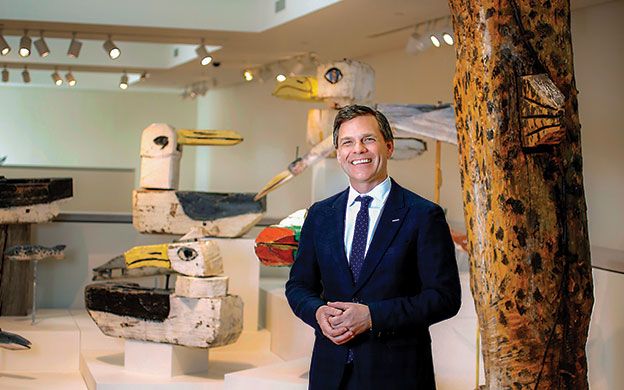
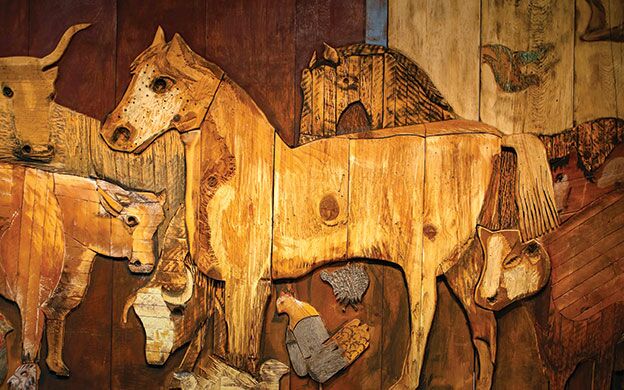

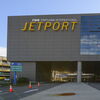

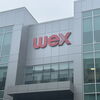

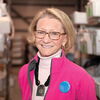




Comments